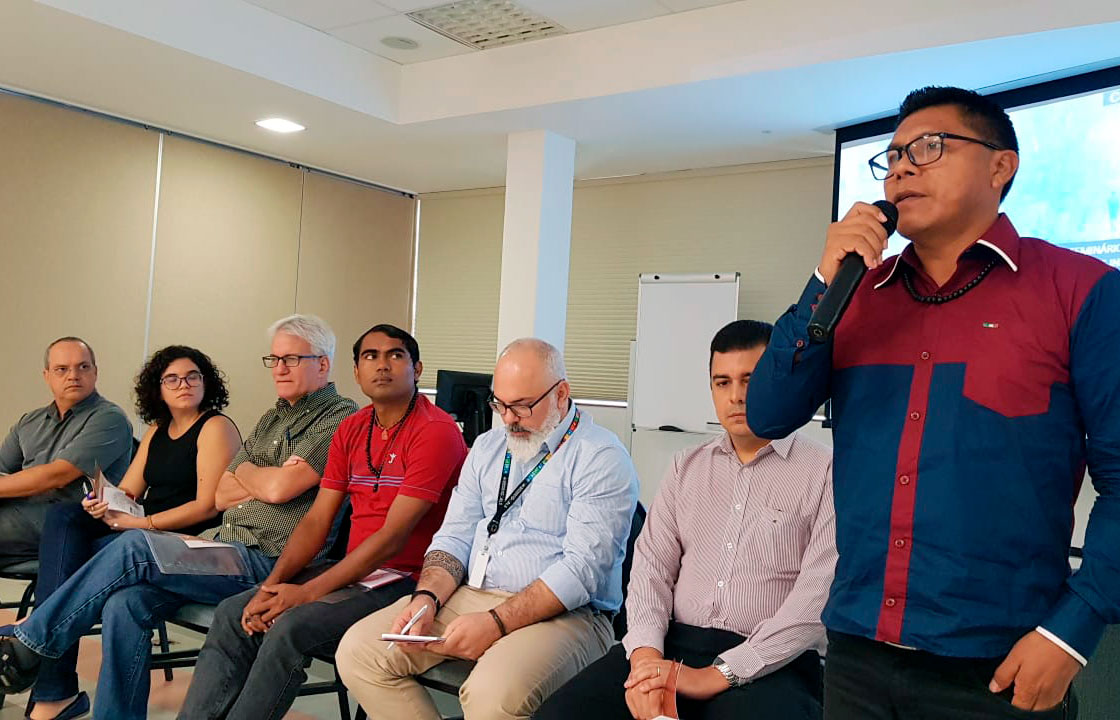Censo 2020
Seminar shows how to overcome challenges of portraying indigenous peoples in Census
December 09, 2019 02h00 PM | Last Updated: December 10, 2019 12h45 PM

To obtain an accurate picture of the situation of the indigenous peoples in a continental-size country like Brazil is not a simple task. After all, there are hundreds of ethnicities scattered in the entire national territory This is one of the challenges of the 2020 Census, which will visit 618 indigenous lands from August 1st onwards, an increase of more than 20% compared with 2010.
To align the methodology and disclose the changes planned in the data collection, the IBGE held last week (4 and 5), in Rio de Janeiro, the "X Seminar on Demography of the Indigenous Peoples in Brazil", with the participation of representatives from government organizations, indigenous leaders and scholars.
A new methodology of data collection will be put into operation. To do this, adaptations and innovations were created to improve the enumeration, reduce problems of coverage, deal with refusals and reduce the data collection time.
All the development began in 2018, involving the Technical Committee of the Census, as well as the Planning and Budget and Advisory commissions. After that, the changes were approved by offices and associations involved in this subject, like the National Indian Foundation - Funai, the Special Secretariat of Indigenous Health - Sesai and a number of organizations of indigenous movements.
Based on the pilot tests, dress rehearsal and 2017 Census of Agriculture, the 2020 Census staff developed a line of operation that will provide a distinctive approach in indigenous territories, improving the results of the next census operation.
One of the major obstacles to be overcome is the percentage not reported of indigenous in urban areas. For this, Areas of Statistical-Operational Interest were created in places where indigenous and non-indigenous populations are reported. In these areas, as well as in the indigenous lands, the geolocalization-equipped Data Collection Mobile Devices - DMCs will ask different questions destined to the indigenous populations. A different redaction, extra questions, explanatory sub-texts, all adapted to the native peoples.
The initial approach is treated with an extreme relevance by the organization. Enumerators, supervisors and coordinators who will take action in indigenous territories will have an extra day of training. "Nobody will approach them without a distinctive training. The idea is that the professionals learn to respect the special timing, space, costumes, rules and procedures of arrival, negotiation and closing up, as well as the demeanor rules and adaptations of questions", justifies Marta Antunes, coordinator of the Traditional Communities and Peoples Project in the 2020 Census.
The Census operation will also count on focal points of the workgroup of traditional communities and peoples, trained to assure that the indigenous areas are treated with due attention.
Another innovation in 2020 will be a room specifically destined to follow up the data collection of the indigenous peoples, open to the movements and offices interested.
Indigenous leaders will have a key role
The organization of the 2020 Census also counts on the role of the indigenous leaders to improve the data collection. In addition to the enumerators, guides-translators and distinguished indigenous leaders will work together, the last ones in charge of explaining what a Census is and the importance of answering the questionnaires.
"We need to sensitize the indigenous to answer the Census. Nobody knows what the IBGE is in most lands. In some areas, our questions are even not translatable to the local languages", explained Antunes.

In the initial approach, the Census will apply a questionnaire to the group, collecting information about the villages and getting closer to the local leader. "Counting how many indigenous persons are in Brazil is not enough. We wish that Brazil sees itself as a multi-ethnic country in its essence”, states Ricardo Weibe Tapeba, representative from the Articulation of the Indigenous Peoples and Organizations of the Northeast, Minas Gerais and Espirito Santo - APOINME, who attended the seminar.
For Weibe Tapeba, it is expected that the 2020 Census brings more precise information about the profile of the indigenous population. "We are working so as to the data collection strategy is closer to the reality", said him.
Also attending the event, a representative from the Federation of Indigenous Organizations of Rio Negro - FOIRN, Adão Francisco Henrique, sees the next Census as the opportunity of the indigenous peoples to justify their demands to the public authorities. "Our main challenges are accessing Education and Health. It is important for us to follow up the Census so it reports us the situation in the villages", sustains him.


















